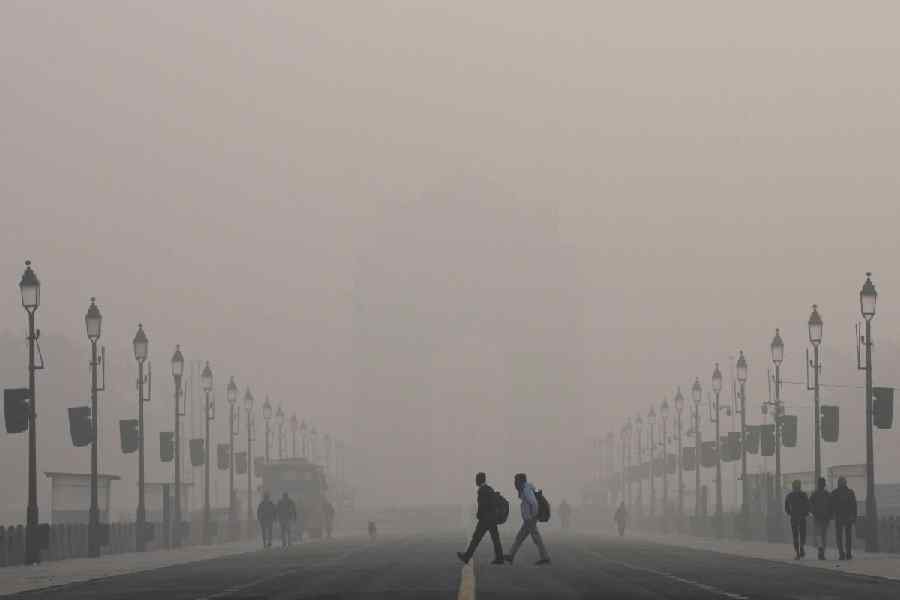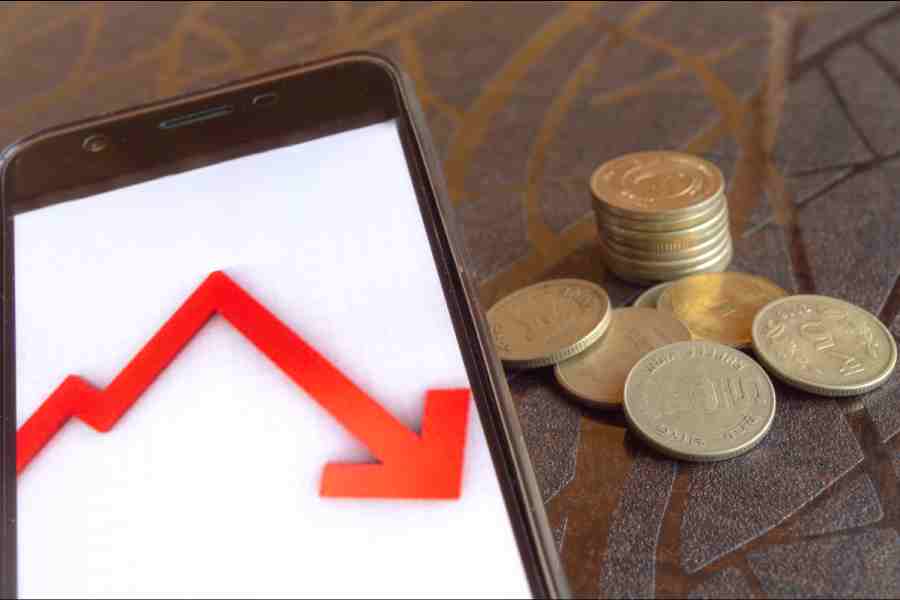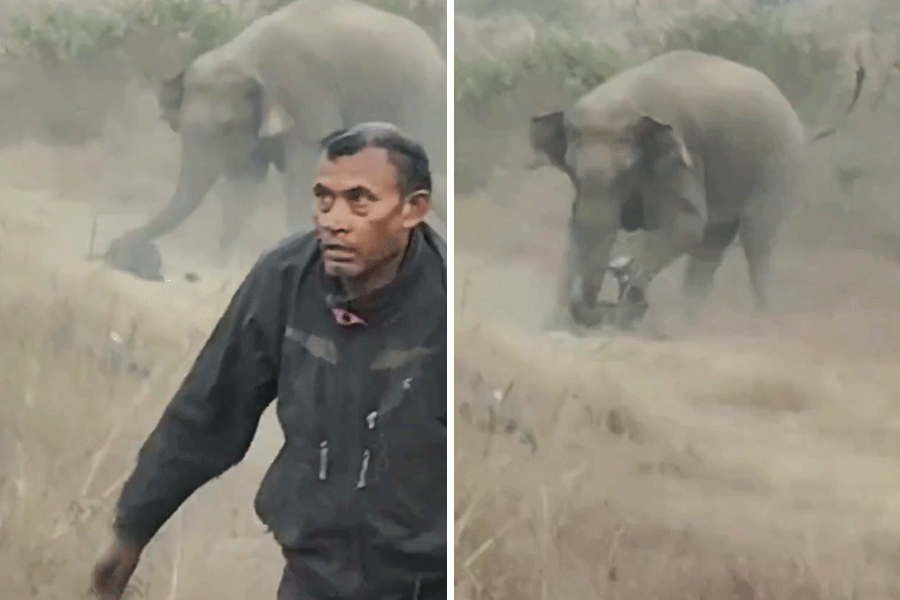 |
Baby Falak died in March this year; baby Tanaaz five months later. Three-month-old Ahuti died recently. Their stories were similar — the little girls had all been battered to death.
Last year, the case of a Bengali child allegedly being abused at home in Norway hit the headlines. A month ago, American authorities accused a Bengali couple of causing multiple injuries to their child.
Child abuse at home — the battering of little ones by parents — is no longer confined to the four walls of a house. Increasingly, they are spilling out into public space. At times the children themselves lodge complaints on helplines.
“Every month we get more than 40 cases of extreme violence against children in their own homes, especially in middle and upper middle-class ones,” says Minati Adhikary, chairperson, Child Welfare Committee (CWC), Calcutta.
Take six-year-old Ritabrata Ghosh, who lived with his mother, a divorced call centre employee, in the northern fringes of Calcutta. Every night before going to work his mother locked him up in the flat with loads of homework. The boy never went out to play, nor was he fed well. Every morning he used to open the windows and call out for food.
Two months ago, neighbours broke open the door to the apartment, and found the boy lying unconscious on the floor. There was a bleeding gash on his forehead and clumps of hair had been pulled out of his head. His mother was standing there seemingly unfazed. The neighbours called the police who put him in the custody of the CWC.
Experts say that there are umpteen cases of parents beating their children with ropes, belts or rods, scratching them and pulling their hair out. Sometimes they come across children who have been burned with a hot kitchen spatula. The trauma that children go through refuses to ease even when they are removed from the violent parent.
Ritabrata now lives in a home for children and refuses to see anyone. He is aggressive and hardly speaks. “We don’t know whether the mental scars will ever heal. The child still shivers when there is talk of his mother,” Adhikari says.
Five-year-old Javed’s story is similar. Every day his mother, a PhD in history, thrashed him over unfinished schoolwork. Once he was beaten up so badly that his hearing was affected. It was his father, an engineer, who complained to a helpline.
Often, the children don’t live to talk about the violence. Two-year-old Falak was admitted to a Delhi hospital in January with a fractured skull and bite marks on her body. The child, who had also been branded with a hot iron — allegedly by the people who were in charge of her — died in March. Tanaaz, also two, had allegedly been beaten, branded and burnt by her parents in Mumbai. Finally, Ahuti’s mother was arrested on charges of battering her to death because she couldn’t stop the baby from crying.
A countrywide report presented by the 24-hour helpline Childline 1098 (1098 being the toll-free number that anyone can dial to report a case of child abuse) states that physical abuse by the immediate family outweighs any other form of abuse by other categories of people (relatives, friends, hospital staff, teachers, neighbours, employers and so on).
In 2010, 714 cases of physical abuse by immediate family members were reported versus 117 by teachers. Close family members were responsible for 473 cases of emotional abuse versus 178 cases by teachers. The 2011 figure reveals that the numbers have shot up. There were 1,121 cases of physical abuse and 798 cases of emotional abuse by a child’s immediate family.
Mental abuse can entail a child being locked in the dark, constantly compared with other children or made to feel inferior to others. Sometimes, to punish their children, parents don’t talk to them for hours. Children are also emotionally blackmailed when parents threaten them with “I will die if you don’t listen to me” and other such phrases.
“The perpetrators are mostly their own parents,” rues Dilip Bose, co-ordinator, Childline, Calcutta. The most vulnerable age group is 6-15, with 73 per cent of such cases involving children in this bracket. According to the 2011 data, more boys (58 per cent) are abused than girls, while more girls (54 per cent) are subjected to emotional abuse.
Not even a small fraction of the violence is reported. “Violent parents feign that nothing has happened. What happens in homes is not under public scrutiny and sadly, under the Juvenile Justice Act, there is nothing explicitly mentioned for the protection of children in family settings,” says Santha Sinha, chairperson, National Commission for Protection of Child’s Rights (NCPCR).
The experts believe that abuse is on the rise for several factors. “With double-income-single-kids becoming the norm in society, the attention is focused on the child. Love and affection now often depend upon a kid’s performance in school,” say Dr Rima Mukherjee, psychiatrist.
Mothers, the counsellors say, are often the culprits. There have been instances of well-educated women leaving their careers to bring up their children — and heaping both their ambitions and frustrations on them. “The stress level is so high that even little mistakes call for disproportionate punishments,” adds Dr Mukherjee. Other factors too are at work. Some of the violent parents are those going through rocky marriages or mental illnesses. Other reasons include insecurity, stress at workplaces and homes, and financial crises. Ritabrata’s mother, for instance, was under mental and financial stress because her former husband did not help her financially.
“Violence mainly stems from poor parenting skills, lack of education and dysfunctional family situations,” says Shiaju Varghese of Childline Delhi.
Often, driven by physical and mental torture, children run away. Some get dragged into criminal rackets or end up being trafficked.
Reema Sinha, a 15-year-old from an upper middle class family in Tollygunge, was recently rescued from a brothel in Mumbai along with eight other minor girls. Beaten and admonished at home over trivial issues, Reema had six months ago fled with a man twice her age. A few days later, he sold her.
“When we rescue these kids they refuse to divulge their address because they don’t want to go back to their parents. So we usually send them to children’s homes,” Bose says.
Experts believe that the signs of an abused child are often evident. “There is a fall in the performance of students who get beaten up by their parents or treated badly at home. Sometimes, they get violent and bully classmates or withdraw into a shell,” says Malini Bhagat, principal, Mahadevi Birla Girls’ High School, Calcutta. “In extreme cases, they even vent their anger by breaking school furniture. In such cases we call parents and counsel them,” she says.
Once in a while, a parent is convicted. In August, a Delhi court sentenced a child’s father and stepmother to 10 years of rigorous imprisonment for torturing him when he was barely three. The child, now 13, had suffered fractures and multiple strokes. He deposed against his father and stepmother.
(Some names have been changed to protect the identity of the victims.)











